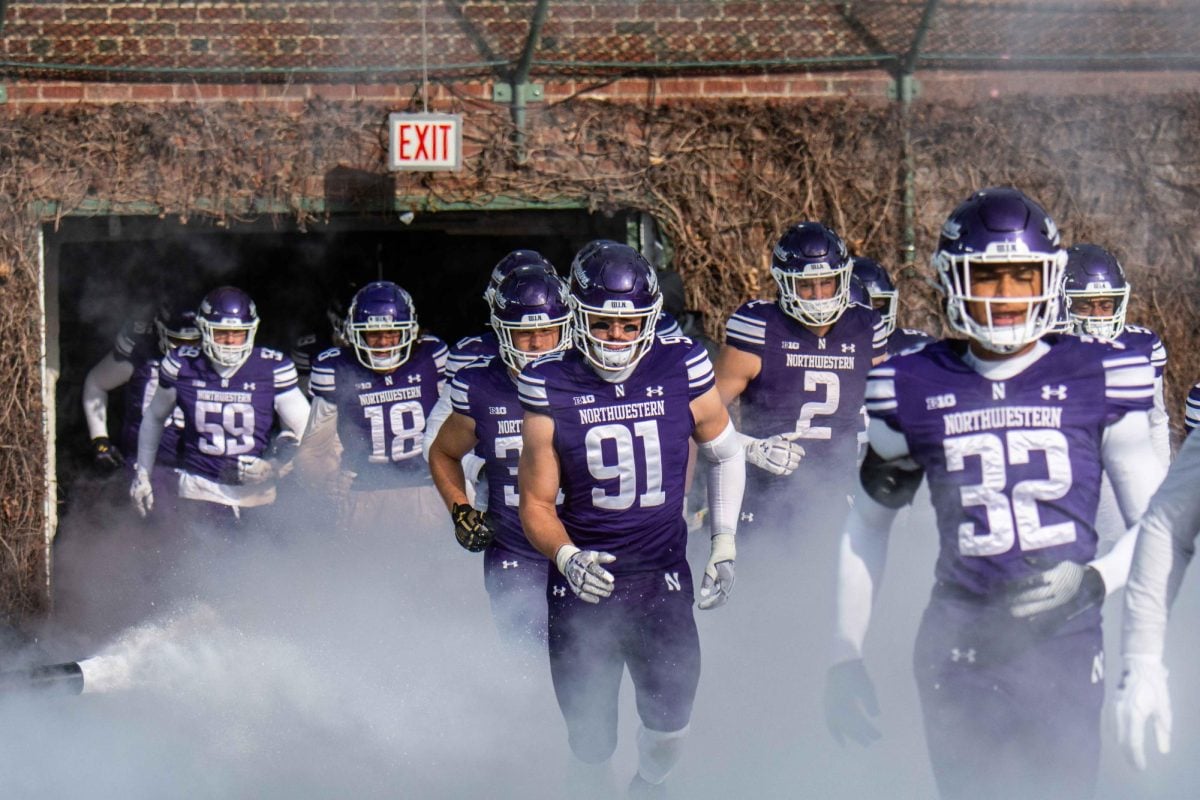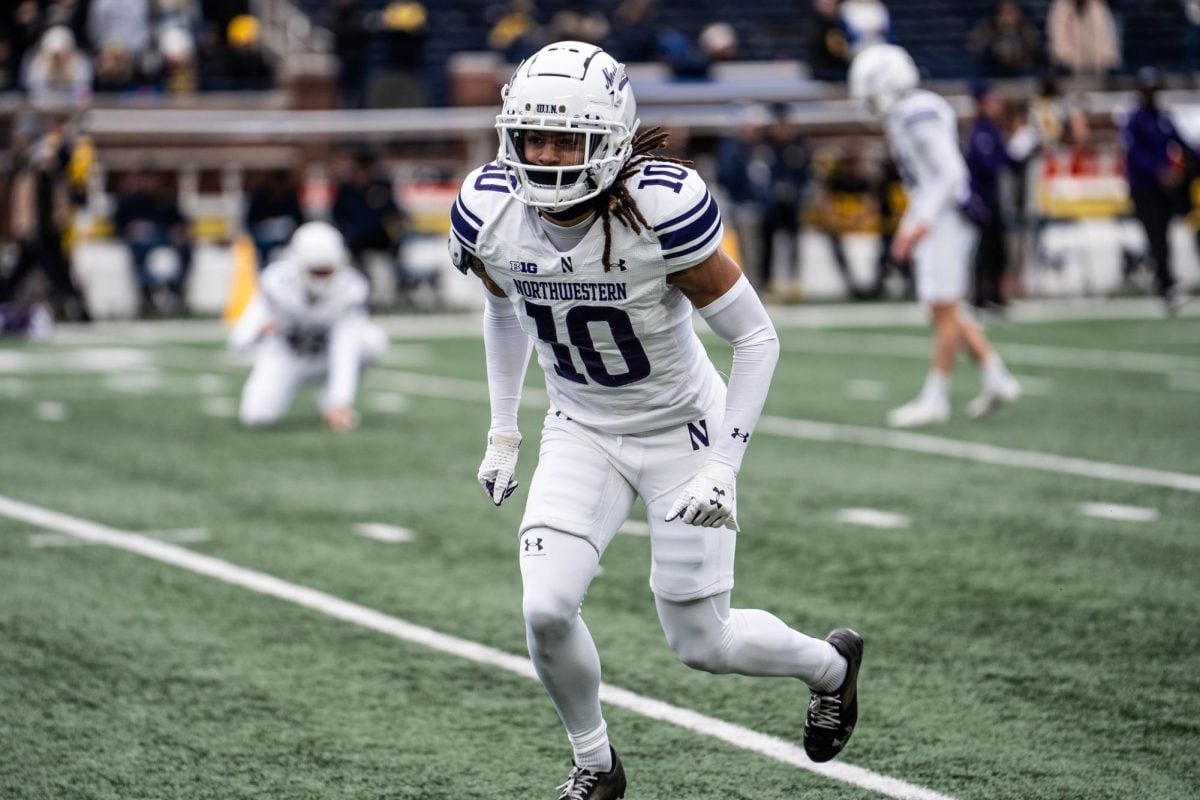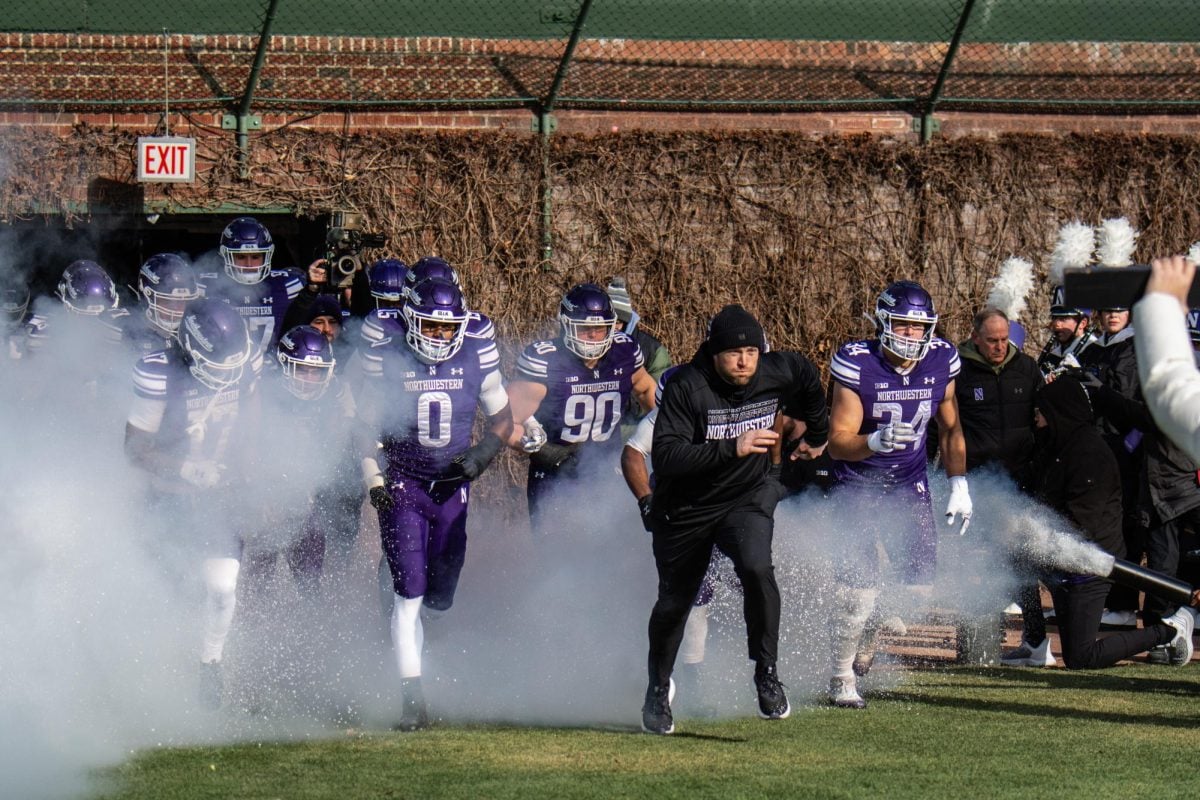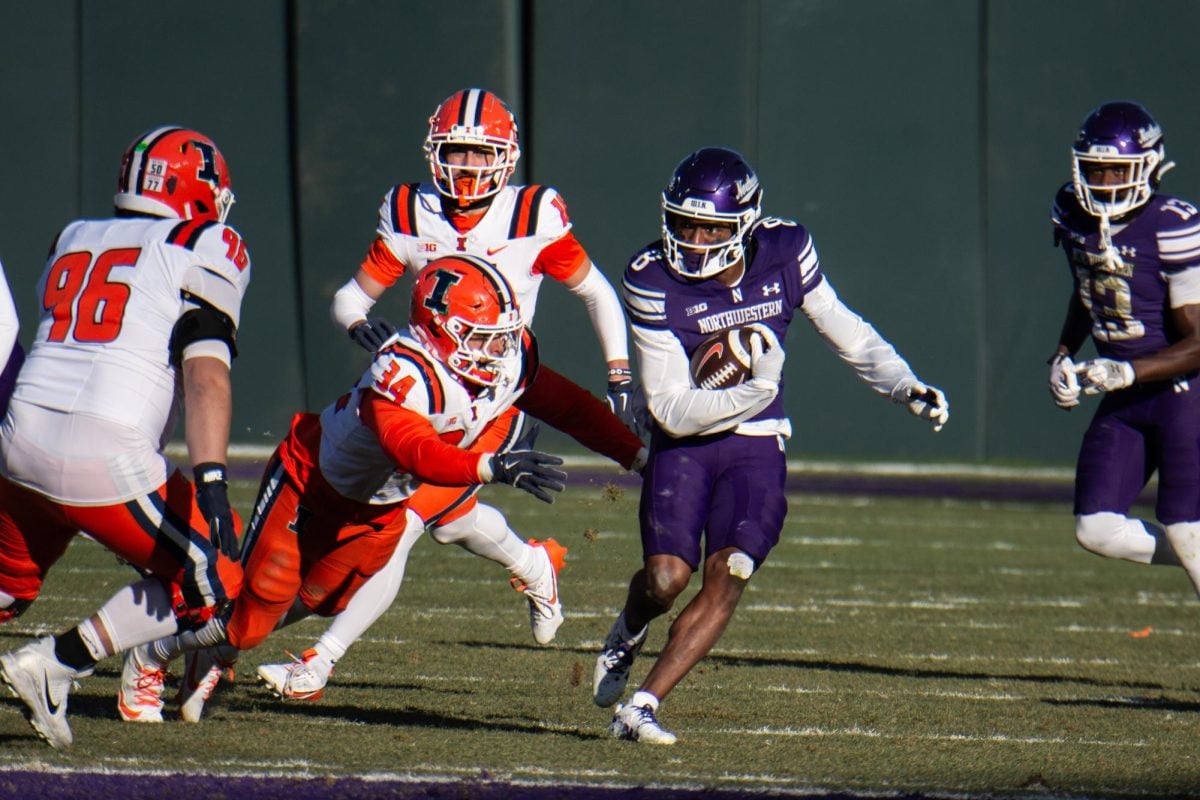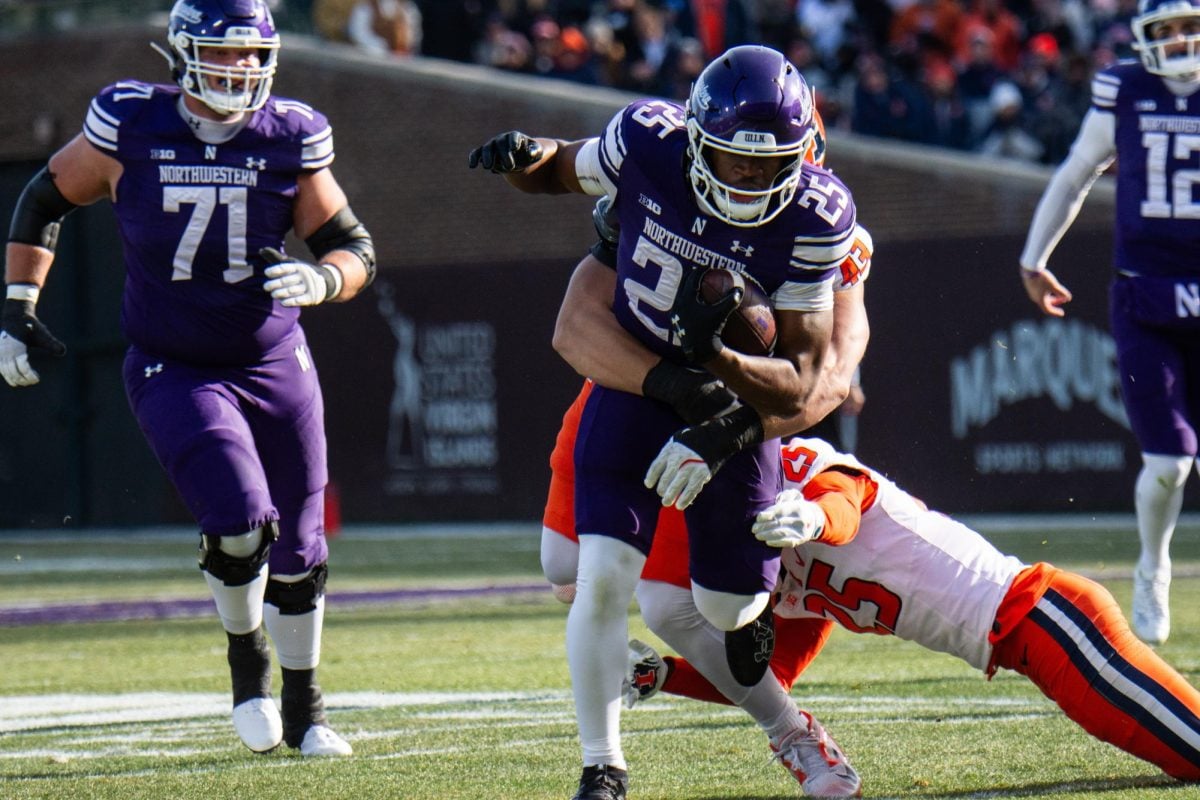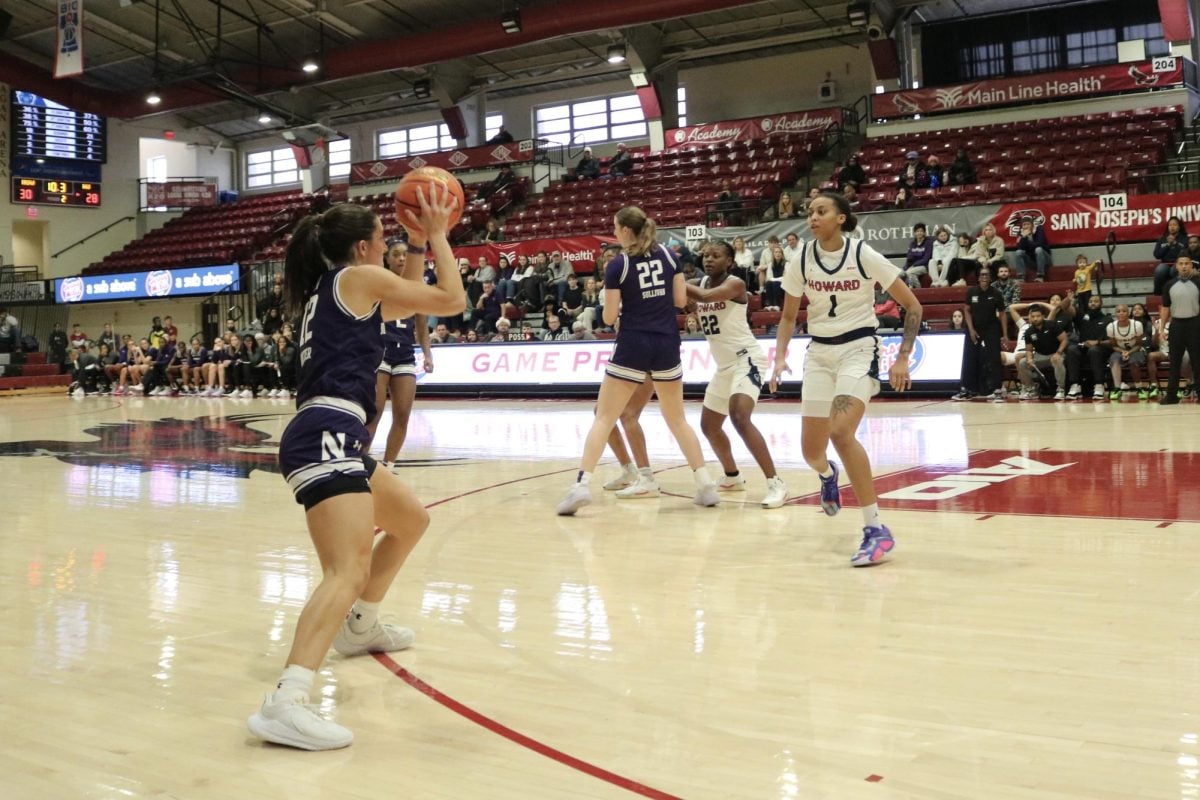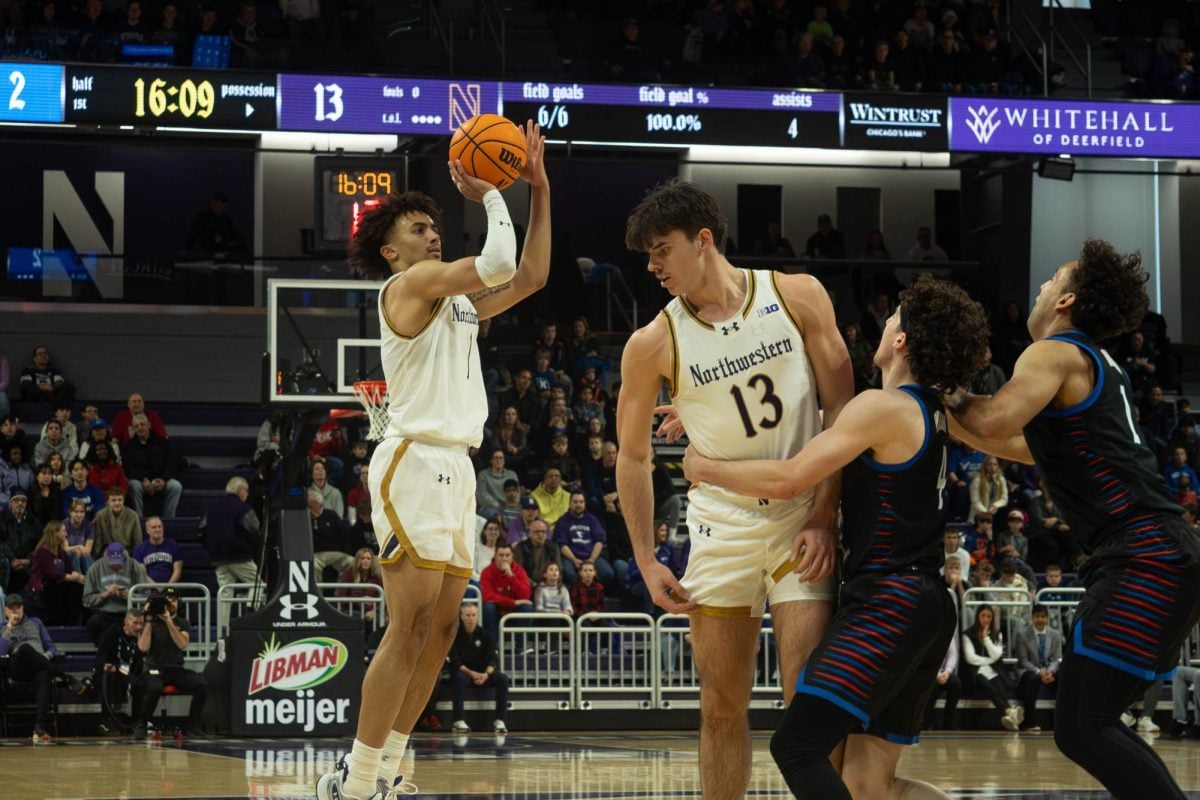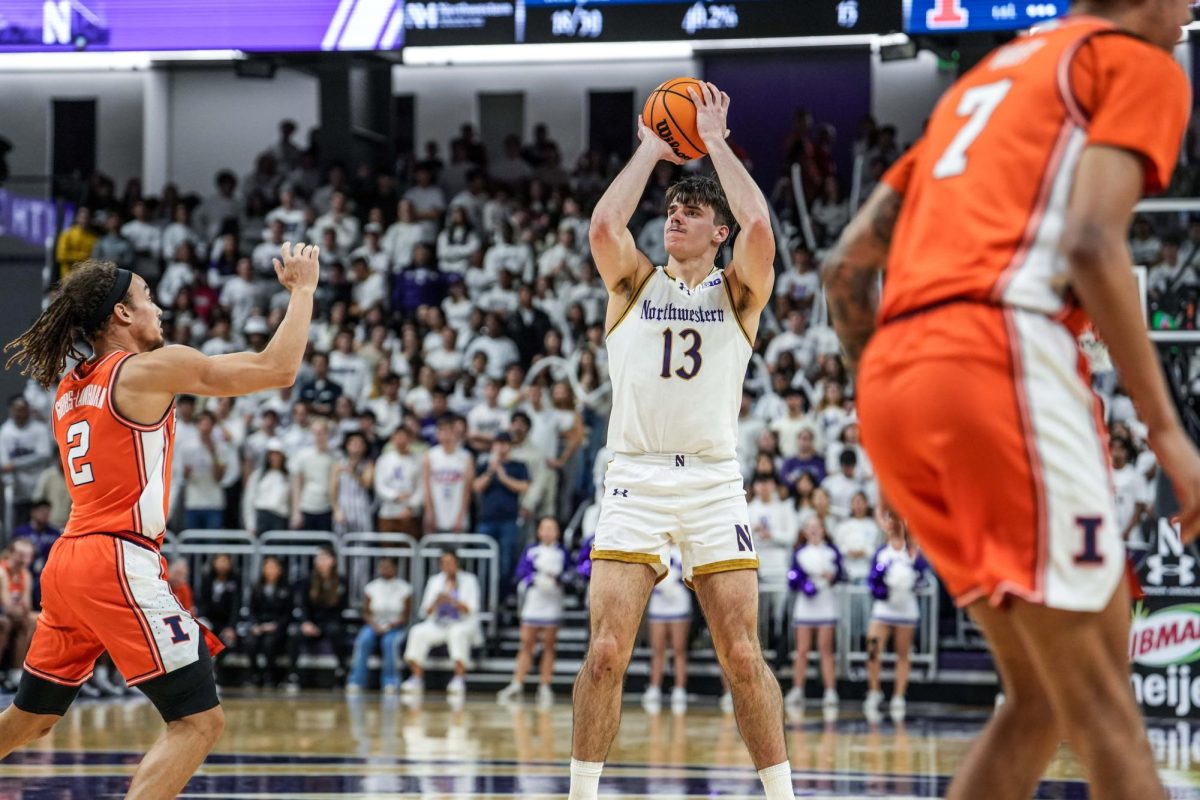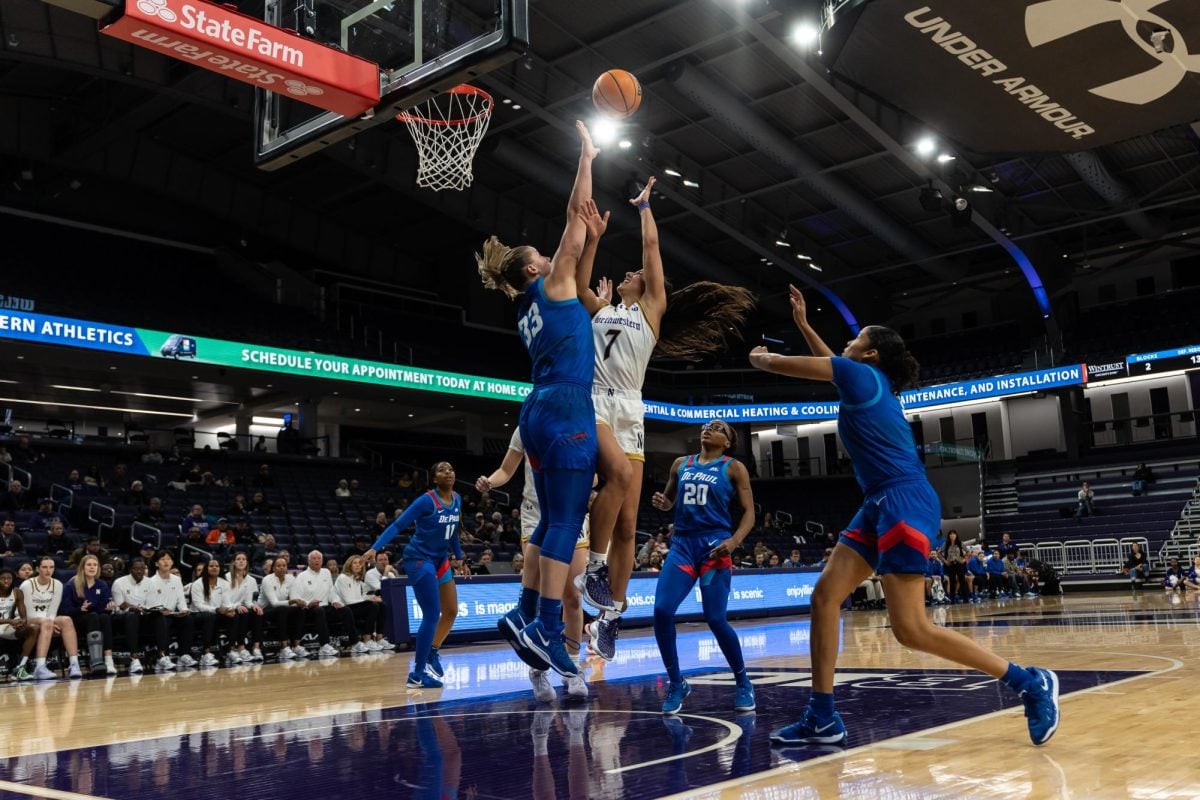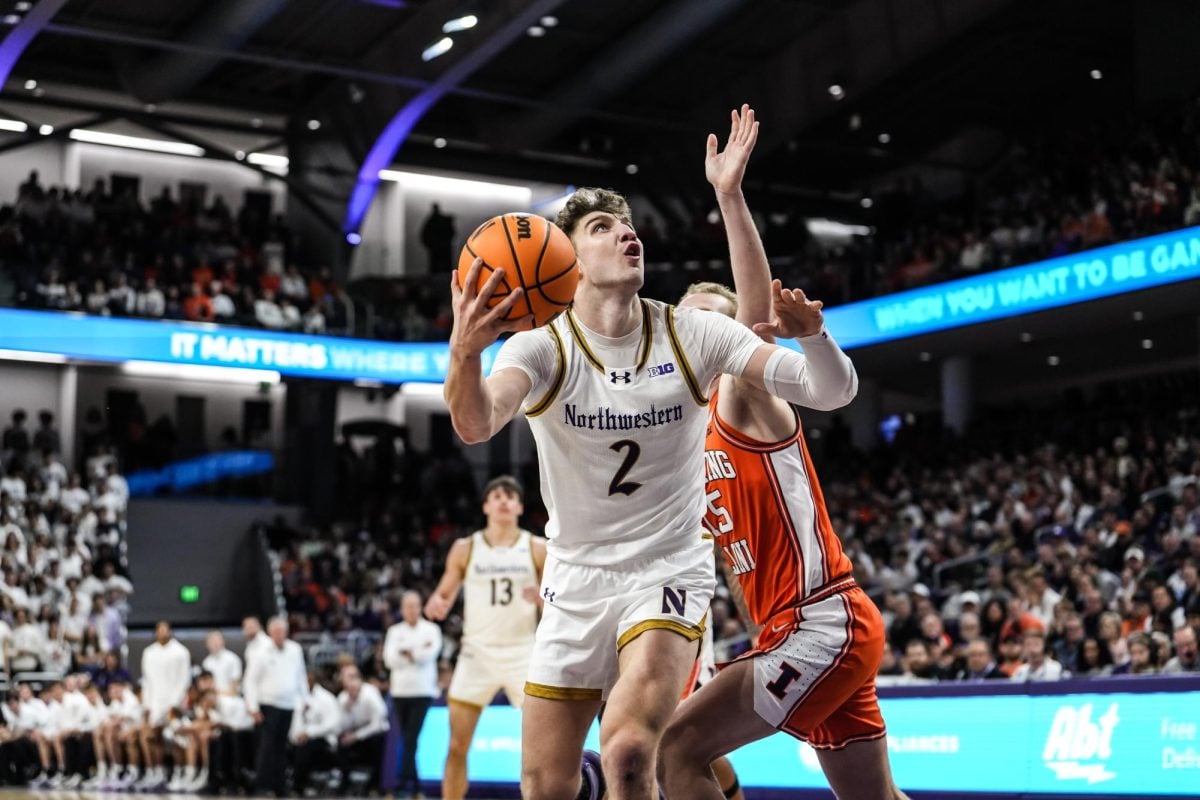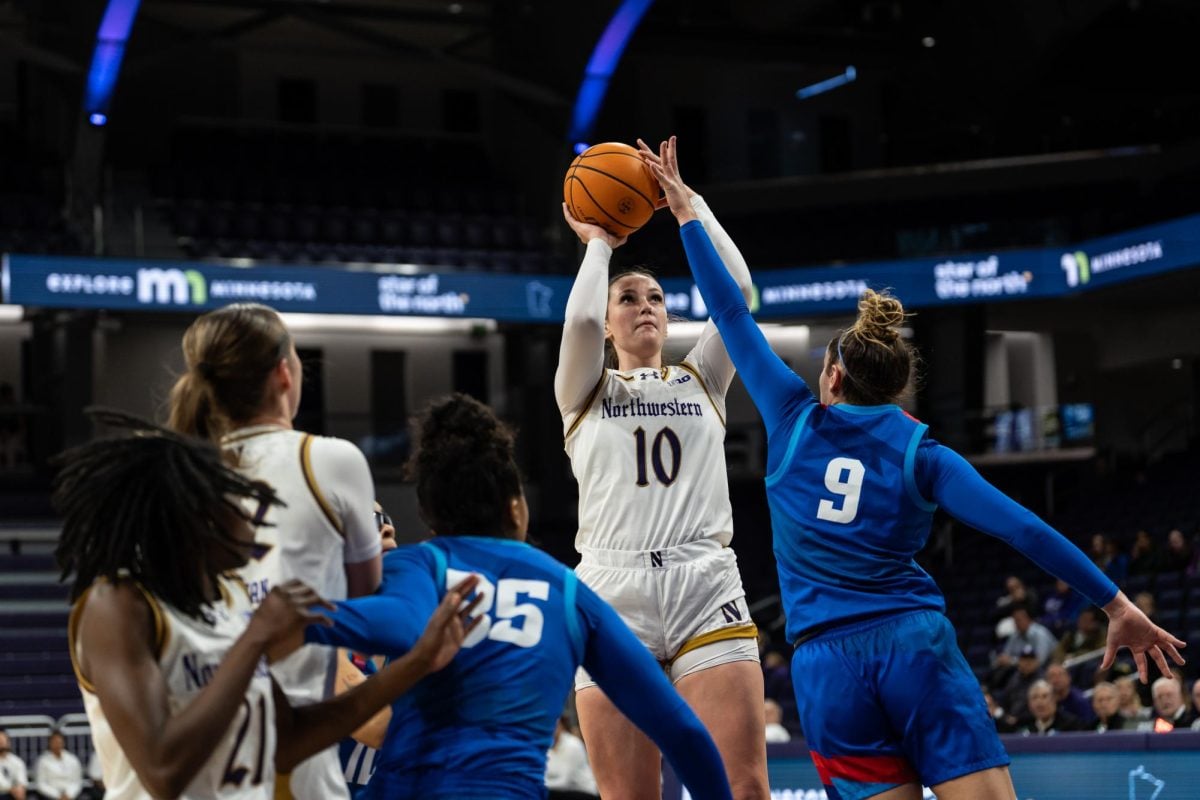Mike Polisky knows what it’s like not to be the top dog in the Chicago sports market.
Northwestern’s senior associate athletic director for external affairs has been around the block of Chicago’s second-tier teams, serving as president of the Chicago Rush of the Arena Football League and the American Hockey League’s Chicago Wolves. Those experiences have left him well-versed in the language of competition for attention in one of the country’s most crowded sports markets.
“The principles are pretty similar,” Polisky said. “Unless you’re one of those teams, the Bears, Cubs, Sox, Bulls, Blackhawks, unless you’re one of those teams you’re going to have to fight for your food a little bit in the marketplace.”
Unfortunately for NU, even in a city with nearly 3 million people, there’s only so much food to fight for and a lot of hungry mouths trying to eat.
“There are schools, professional teams, semi-professional teams,” athletic director Jim Phillips said. “It’s certainly a crowded marketplace that everyone’s trying to find a niche in.”
Polisky was brought in to NU last June to help the school build its niche in a pro sports city as the University bought in on his impressive track record in Chicago. Attendance at Rush games increased every year under Polisky, concluding with a 99 percent capacity average in 2008. With the Wolves, Polisky improved ticket revenue by more than 14 percent, despite the Blackhawks, the Wolves’ primary competitor for the Chicago hockey market, winning a Stanley Cup in 2010.
While NU isn’t as easy of a sell as Chicago’s five major professional sports teams, Polisky said pitching NU has its advantages over his former employers.
“The beauty of being at Northwestern is that it’s such a well-known brand and it has such a great reputation in the marketplace,” Polisky said. “When I was working with the Chicago Rush for instance, there were a lot of issues with just the brand awareness. Northwestern doesn’t have those same challenges.”
Still, the Wildcats are in an unusual position among major conference institutions of actually having to work to attract fans. While at many schools, ticket promotions consist of setting up a hotline and opening the ticket sales box, NU has to work harder to fill the seats.
“We have to do things a little bit differently,” Polisky said. “It’s not an organic situation like a lot of universities are able to have across the country, where you have an enormously large student base and you’re the big property in town like with the University of Iowa or (Wisconsin). Those control the affinity basically, drawing from the entire state.”
Even in its own backyard, NU is outnumbered. The University has the second smallest alumni base in Chicago among Big Ten schools, due in large part to its small student body. While NU boasts an undergraduate student body of 8,367, the next smallest Big Ten institution, Nebraska, more than doubles that total.
Not the only ones
While unique in its problems as a small school, NU is not alone in the Big Ten with the trials of competing against profession teams for attentions. Minnesota, the Cats’ opponent Saturday, can relate.
The Golden Gophers play in the heart of Minneapolis, a city of nearly 400,000 that, like Chicago, offers a full spectrum of pro teams.
Similar to NU, Minnesota football has been a tough sell when fans can watch the Vikings rather than the often-underwhelming Gophers. Though Minnesota won seven Big Ten championships between 1933 and 1941, the Gophers haven’t taken home a conference title since 1967.
Minnesota gained a major boost in its appeal to Minneapolis fans with its new state-of-the-art arena, TCF Bank Stadium, which opened in 2009. The Gophers averaged maximum capacity in their first season in the new stadium.
Though the new on-campus facility has given the Gophers a short-term uptick of interest, Minnesota players still share the added pressure of constant comparison to NFL players in the sports sections of newspapers.
“You still have to handle yourself professionally, especially in a city like Minneapolis with a lot of pro teams,” running back Duane Bennett said at Big Ten Media Days in July. “They’re going to hold you to that professional standard.”
The challenges of sharing a market with professional teams extends beyond the Big Ten and can be even more debilitating to programs that don’t play in major conferences.
Junior wide receiver and Dallas native Demetrius Fields said though Texas is all about its football, there’s little citywide love for local programs like North Texas and Southern Methodist in Dallas.
Between the Cowboys and allegiances to major football programs from across the Big 12, North Texas and SMU struggle to build large fanbases, with neither school averaging even 25,000 fans per game.
“I don’t know if there’s one particular,” said Fields of Dallas’ college football loyalties. “But I’m sure (University of Texas) and the Texas schools and (Oklahoma University) are the top teams.”
The only game in town
Not every school faces the challenge of competing directly with professional teams for fan’s hearts. In fact, Iowa and Nebraska play in states where there are no major professional teams.
“We’re kind of like the NFL team of the state,” Iowa wide receiver Marvin McNutt said. “Since there is no NFL team, there’s nobody to kind of take the attention away from you.”
Though NU junior cornerback Tim Weak never accomplished his childhood goal of playing for the Cornhuskers, the Omaha, Neb., native could speak from a fan’s perspective on what it’s like to be a part of the Sea of Red.
“There’s really nothing else they have,” said Weak, who went to many Nebraska football games as a kid.
The state’s all-out commitment to its flagship school explains why the Cornhuskers have sold out their past 317 football games, an NCAA record.
Though not alone in the state, Penn State and Illinois share similar experiences to Iowa and Nebraska because the Nittany Lions and the Fighting Illini play hours away from the nearest pro squads.
For residents of State College, Penn., Penn State football is about as close as it gets to the NFL without driving the two and a half hours to Pittsburgh for a Steelers game. That isolation makes the locals a part of the team to almost the same extent as the students, running back Joe Suhey said.
“Penn State sports are so huge and it’s what everyone focuses on,” Suhey said. “It’s definitely fun to be part of a community like that, where you get the support of everyone, not just the student body but the people in town.”
State College has a population of just 38,420, but on gamedays, Beaver Stadium nearly triples that.
Although Champaign, Ill., is more than twice the size of State College, it still revolves around the Illini, as Illinois posted an average attendance of 54,188 in 2010. The Illini don’t share the problems of competing for attention that NU fights through because while Evanston is just 14 miles north of the Windy City, Champaign is 138 miles southwest.
“It’s a football town,” Illinois wide receiver A.J. Jenkins said. “Champaign is a great city, especially when you’re winning when you have all the students and the fans behind you, I think just because of the fact the whole community revolves around sports.”
The undivided attention that comes from not sharing a market with professional teams has a dark side to it though, as coaches and players have to combat the intense pressure to always perform or risk citywide vitriol.
“There’s definitely a little bit of both (added pressure and popularity),” Iowa linebacker Tyler Nielsen said. “The fans expect us to compete every year.”
Building a buzz
NU would certainly prefer the added demands of extra attention, and Polisky’s methods have started to produce some results, most notably with the Cats’ new slogan as “Chicago’s Big Ten Team.”
“The line has resonated,” Polisky said. “Members of the media are making references to it, fans are talking about it. It’s just become somewhat of the vernacular associated with our athletic programs.”
Though NU obviously does not reside in Chicago’s city limits, Polisky insisted the catchphrase fits the school.
“We weren’t trying to create something, what we simply did was we defined who we were, what we are,” Polisky said. “We just wanted to make sure we reminded people.”
NU has seen tremendous growth in the popularity of its revenue-producing sports teams since hiring Polisky. The Cats’ average attendance rose by 12,259 in 2010, the second largest improvement in the nation. Though attendance for the Wrigleyville Classic, which drew a crowd of 41,058, certainly aided the boost, attendance for NU’s five home games at Ryan Field increased by 11,337 on average.
Polisky said season ticket sales for football have increased by 62 percent while basketball season ticket sales have grown by 25 percent.
The increased popularity is a reflection of a larger recommitment by NU to improve how it attracts fans. Polisky said the administration, athletic department and the board of trustees “have given us the resources to kind of treat Northwestern athletics like a professional franchise in town. We have an outbound, proactive ticket sales force.”
Recognizing that Chicagoans are alumni of other Big Ten institutions, NU has worked to make its athletic venues a second home for those fans displaced from their alma mater.
“We have expanded everywhere we can from an external standpoint to welcome all Chicagoans to the Northwestern athletic world,” Polisky said. “It’s okay if you didn’t graduate. In fact, most people didn’t graduate from here … If you graduated somewhere else, we can be your second favorite team.”
Though the early results have been promising, NU still has a long way to go before reaching its goals. Schools like Miami have managed to draw larger crowds without having to rely on other universities’ fans to do so. The Hurricanes averaged 52,575 fans for home games last year, more than Ryan Field can even hold.
NU’s athletic department participated in a conference with other large-market universities in Florida earlier this year to swap ideas on how to compete for attention in markets crowded by professional teams. The conference drew 15 schools from seven conferences across the country.
However, Polisky said that while the schools’ issues were similar in theory, they each faced aspects specific to their particular city.
“Chicago is special,” Polisky said. “Every market has their own unique challenges. While it’s nice to learn from others, we need to make sure we’re doing everything we can here based upon our knowledge and experience.”
With no quick fix, it will take time before NU routinely fills its stadiums to capacity with loyal supporters.
“This isn’t going to be solved in a year or two,” Polisky said. “It’s going to have to be a concerted, aggressive, focused effort over many years.”
Senior linebacker Bryce McNaul said he feels that the Cats can capitalize on their amateur status to appeal to fans. Though the Bears and other Chicago teams may have the city in their names, NU can be Chicago’s true home squad.
“It’s a little bit more of a hometown feel,” McNaul said. “It’s hard to separate what those professionals are doing from them just doing their job. For a lot of us, we’re Midwest kids if not Chicago kids ourselves, so it’s kind of like your guys defending your hometown’s pride.”
While Polisky and his staff’s efforts may have gotten some Chicagoans to take a look at NU, it will be athletic success—not slwogans—that will have a greater impact on the Cats’ appeal.
“We’ve done a good job of capturing Chicago’s interest, and if we keep having big wins like we are lately, we’ll continue to do that,” McNaul said. “We’ve just got to keep up our end of the bargain and keep winning.”
